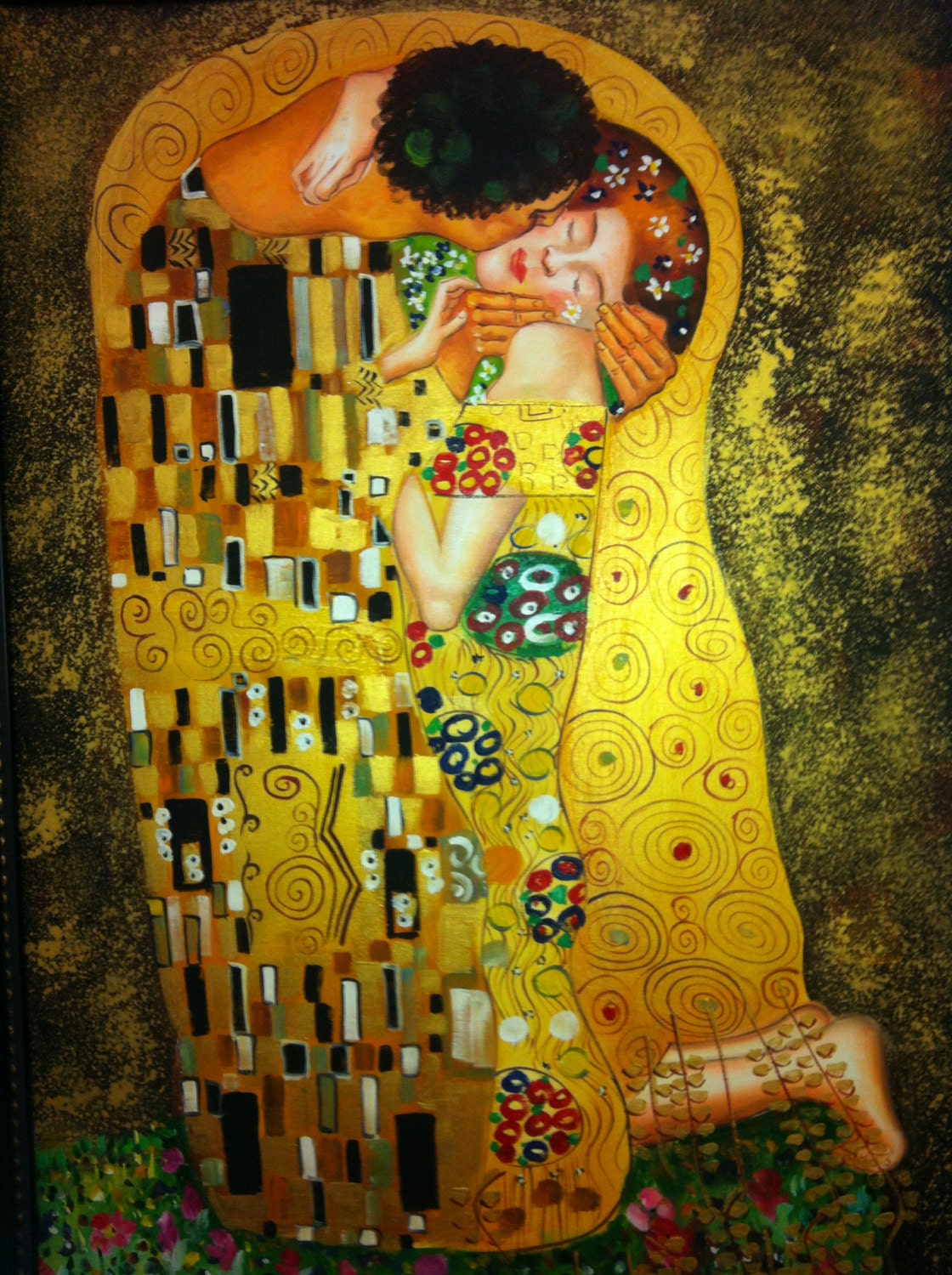

The woman is the focus, her facial expression emphasizing the clandestine nature of the action. Composition: There is a definite flow to the figures in The Stolen Kiss.

For Fragonard was nothing if not attuned to fashion. This painting combines the playfully erotic subject matter of his earlier works with a newfound sobriety of composition and attention to detail that looks forward to the advent of Neoclassicism. The Stolen Kiss is a watershed moment in Fragonard's career, combining his past and future influences after the crushing blow of the French Revolution. The influence of new painters such as Jacques-Louis David is made apparent in the clean lines and starker tone of the painting. Birth of Neoclassicism: The French Revolution caused a return to idealist depictions of human figures, and though by no means a mythological or classical composition, The Stolen Kiss is a far cry from the earlier whimsical style of Fragonard. This detail is particularly evident in the carpeting and fabrics of the portrait. Dutch Masters: Dutch artists such as Rubens and Hals provided inspiration for the glossy finish of the painting, as well as the blended brushstrokes and precise attention to detail. Fragonard had been an admirer in his younger days of this particular style, and this influence carried over into his later career and is apparent by The Stolen Kiss.

Mannerism: The long lines of the maiden's figure, stiff pose and tapered fingers are typical of Mannerist influences, such as Parmigianino, Rosso Fiorentino and Jacopo Pontormo. The end result draws from several stylistic sources. Obviously the subject matter is taken from the erotic themes popular of the day, with a young maiden lured away for a quick tryst in the hall during a society gathering. This painting, typical of the later works of Jean-Honoré Fragonard, draws strongly from several sources. One can almost see in the sly look of the maiden's eyes the knowledge of the coming storm, knowing that the decadence couldn't last and in this way The Stolen Kiss stands as a historical artifact, transcending the bounds of mere genre eroticism. Fragonard was the favored genius of this genre. This type of semi-erotic theme was quite popular in the heady days before the French Revolution, particularly with the French aristocracy who slouched fashionably around the halls of Versailles digging up romantic follies and gossip fodder of their own. The decoration and fashion becomes almost a third character in the scene. In keeping with the frivolity of Rococo style, the young lady's dress is painted with extraordinary attention to detail. The action is stilted, the figures posed in what almost seems to be a caricature of a passionate embrace. The young maiden is coquettish, leaning in for the kiss while at the same time looking away back towards the other members of the party in the next room over. The painting captures a perfectly frozen moment in time two lovers caught by the spectator in the act of stealing a furtive kiss while no-one else is looking. The Stolen Kiss explores the theme of secretive romance and passionate moments grabbed in a fleeting moment. The Progress of Love: Love Pursuing a Dove.


 0 kommentar(er)
0 kommentar(er)
